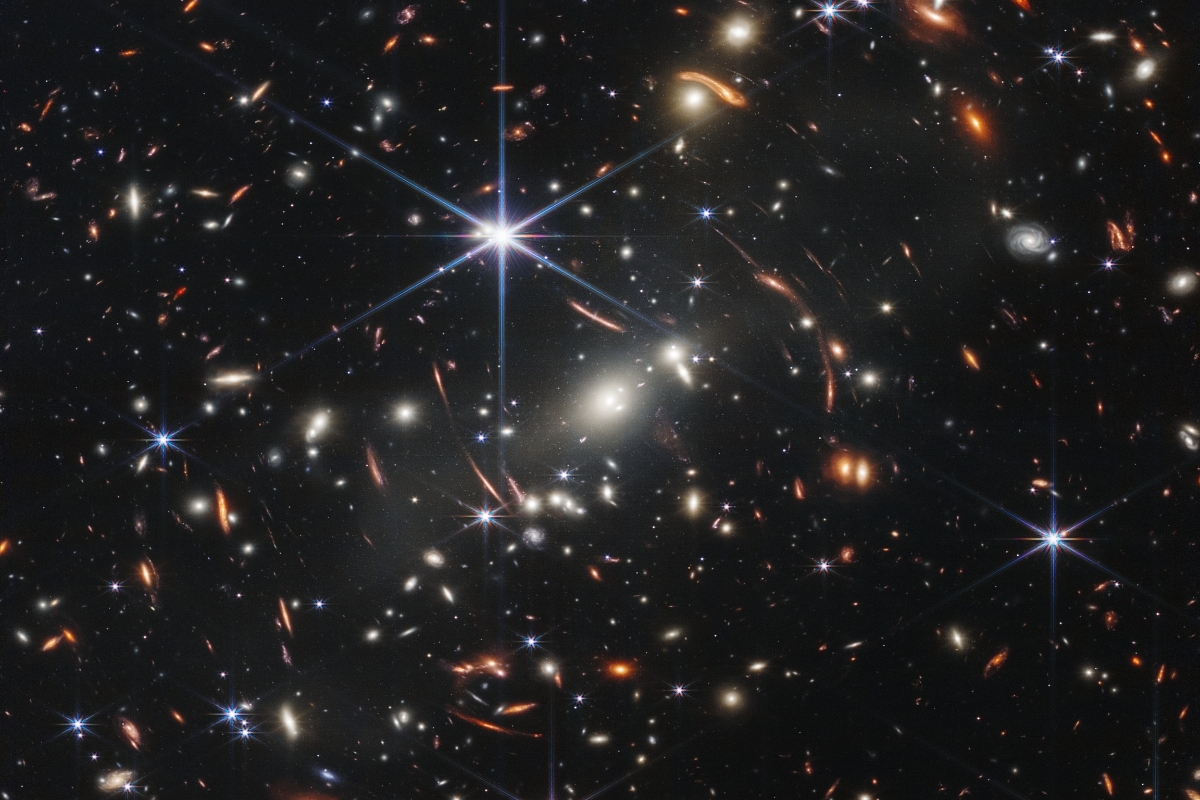Context
James Webb Space Telescope Looks 4.6 Billion Years Into Universe's Past; More Images To Follow

The galaxy cluster SMACS 0723 as it appeared 4.6 billion years ago.(NASA, ESA, CSA, STScI)
US President Joe Biden unveiled what is being celebrated as the deepest and sharpest infrared image of the distant universe.
The James Webb Space Telescope (JWST), deployed in space end of last year, took the snap.
The JWST is a collaboration between the US's space agency NASA, European Space Agency (ESA), and Canadian Space Agency (CSA).
It was launched on Christmas day in 2021.
The iconic image, released as a 'sneak peek' on 12 July (IST), is known as Webb’s First Deep Field.
It shows the galaxy cluster SMACS 0723 as it appeared 4.6 billion years ago.
Thousands of galaxies — including the faintest objects ever observed in the infrared — have appeared in Webb’s view for the first time.
The deep field, taken by Webb’s Near-Infrared Camera (NIRCam), is a composite made from images at different wavelengths.
Total time taken for the picture was 12.5 hours — achieving depths at infrared wavelengths beyond the Hubble Space Telescope’s deepest fields, which took weeks.
Webb’s NIRCam has brought those distant galaxies into sharp focus.
They have tiny, faint structures that have never been seen before, including star clusters and diffuse features.
This slice of the vast universe covers a patch of sky approximately the size of a grain of sand held at arm’s length by someone on the ground.
'Time travel': NASA Administrator Bill Nelson has said more images released by the space agency will reach back further, to about 13.5 billion years, close to the estimated start point of the universe itself.
“We are going back almost to the beginning,” he said.
For reference, the birth of the Sun is estimated to be around 4.5 billion years ago, and the Big Bang, the beginning of the Universe, is estimated to be around 13.7 billions years ago.
Bottom line: The frontiers of space exploration are being pushed further than ever before, with the JWST carrying the Hubble telescope's exceptional agenda forward.
Support Swarajya's 50 Ground Reports Project & Sponsor A Story
Every general election Swarajya does a 50 ground reports project.
Aimed only at serious readers and those who appreciate the nuances of political undercurrents, the project provides a sense of India's electoral landscape. As you know, these reports are produced after considerable investment of travel, time and effort on the ground.
This time too we've kicked off the project in style and have covered over 30 constituencies already. If you're someone who appreciates such work and have enjoyed our coverage please consider sponsoring a ground report for just Rs 2999 to Rs 19,999 - it goes a long way in helping us produce more quality reportage.
You can also back this project by becoming a subscriber for as little as Rs 999 - so do click on this links and choose a plan that suits you and back us.
Click below to contribute.
Latest